GEORGIA IN NEW MEXICO
On an extraordinary visit to Georgia O'Keeffe's Abiquiu home, I tried to see what she did.
When you drive over the border from Arizona to New Mexico, you are greeted by signs saying, “Welcome to New Mexico, The Land of Enchantment.” This seemed to me a bit overwrought, almost Disney-like, but let me tell you, it is entirely appropriate. The sky is impossible, the space so broad and rich that it’s almost boastful. Georgia O’Keeffe called it “The Faraway.”
O’Keeffe first started spending time in New Mexico in the summer of 1929. Almost a century later, we visited her adobe home in Abiquiu (reconstructed from an 18th century roofless wreck over three years in the late 1940s) and spent some time, of sorts, with her.
Now I’m not an expert on O’Keeffe - nowhere near it - merely a longtime admirer of her hit-you-in-the-heart art and personal iconography. And I really mean personal: few other artists apart from say, Picasso, Dali or Warhol have imprinted themselves, as distinctive living beings, right into our frontal lobe. And of course, I absorbed O’Keeffe’s vaunted style through my years in fashion magazines, where she would often appear as “inspiration” on a page dedicated to, say, belts. (I’m sure she would rank that highly in her canon of achievements).
Anyway, Georgia (let’s just call her that; she was a no bullshit lady) started coming to New Mexico in 1929 and died here in 1986, age 98. In Australia, we call that a good innings. What really made me laugh was when our guide, Frank told us that Georgia’s husband, photographer Alfred Stieglitz, visited and chronicled New Mexico a few times but barely left New York (“There’s nothing west of the Hudson River I want to see,” he said). Fair enough, Alfred!
Anyway, Alfred died in 1946 and Georgia moved permanently to New Mexico. She ended up splitting her time between Ghost Ranch and a newer home in Abiquiu (which had water rights, quite handy out here in the desert).
Now, the first thing you notice about the home is not the of-the-earth adobe itself, but this bitchin’ white Mercedes parked out the front. The image of this feisty icon zipping around the desert in the 70s in this swishy car is delicious.
I wonder if Georgia knew her home would become legend. When you walk inside, you feel she innately did. But that doesn’t come from pretension, it comes from simplicity, her precise edit of her furnishings, and the no-nonsense but exquisite functionality of the place. It envelopes you. When Georgia died, her taste had turned more towards the simplicity and rigor of Japan, which she visited three times. Walk into her living room and it’s spare but powerful: a cushion made from some Turkish flag fabric, just because she liked the design and “a splash of color in a neutral room.” The skeleton of a rattlesnake encased in glass next to three decorative rocks and a snake sculpture. Incongruously, three almost cute painted chickens on a shelf next to other simple ceramics and sculptures, the corner lit by only a bare lightbulb. In the dining room, there’s a Noguchi lamp, but it’s a gift from the actual Noguchi.
But oh, how I loved the kitchen. Kitchens are such a tell, aren’t they? A solid selection of cocktail and martini glasses, and succinctly organized linens and spice racks. She kept what looks like pinto beans in a Maxwell House coffee jar, right next to her Vitamin C. Her spices were neatly ordered, and her taste so remarkable that even her saucepans look like an installation. I could imagine her whooshing around in here, making a pot of Japanese tea and having a sit-down with her beloved Chow dogs.
Frank told us another amusing anecdote: apparently fans of Georgia’s would find out her address and sometimes just show up at her house. Can you imagine? The response must have been…varied. My favorite story involved one hapless young man who showed up at her kitchen door. “Here's my front,” she said, “I’m turning around, here's my back. Now you've seen me, get in your car and you leave.”
Finally, when you walk into Georgia’s studio and bedroom, you just about fall down. The view from the window is her paintings. A saturated tableau of the valley below and the red rock mountains far beyond. That’s what she saw every single day. (With a view like that and a fresh veggie garden, no wonder she lived to 98).
As Georgia aged, her eyesight deteriorated, and she started working with clay. The studio got simpler: there’s a list of phone numbers in large text by the rotary phone, one, incidentally for Ansel Adams. But this view, this environment, sustained and nourished her. In her bedroom, I leaned over her single bed and took a picture, trying to insert myself into her vision.
When you come to the O’Keeffe House, you further understand the singular lack of fuss with which she lived and created her art, her formidable aesthetic and the legend she became. (I don’t think real legends put a whole lot of thought into becoming them, do you?)
I was reading an interview Georgia gave to the Washington Post in 1977, shortly before her 90th birthday. She was talking wryly about what people and critics saw in her paintings: “There was one, 'Horse Skull with Pink Rose' (1931) that people read everything into. In fact, a friend who was staying with me had left some blue pajamas on the table. I had laid a skull on it. I was upstairs and the doorbell rang and I was holding a rose. I came downstairs and I thought it would be silly to answer the door holding a flower, so I stuck it in the horse's eye. I had no great ideas about life and death. I just came back from the door and there it was waiting for me to paint it.”
Legend.





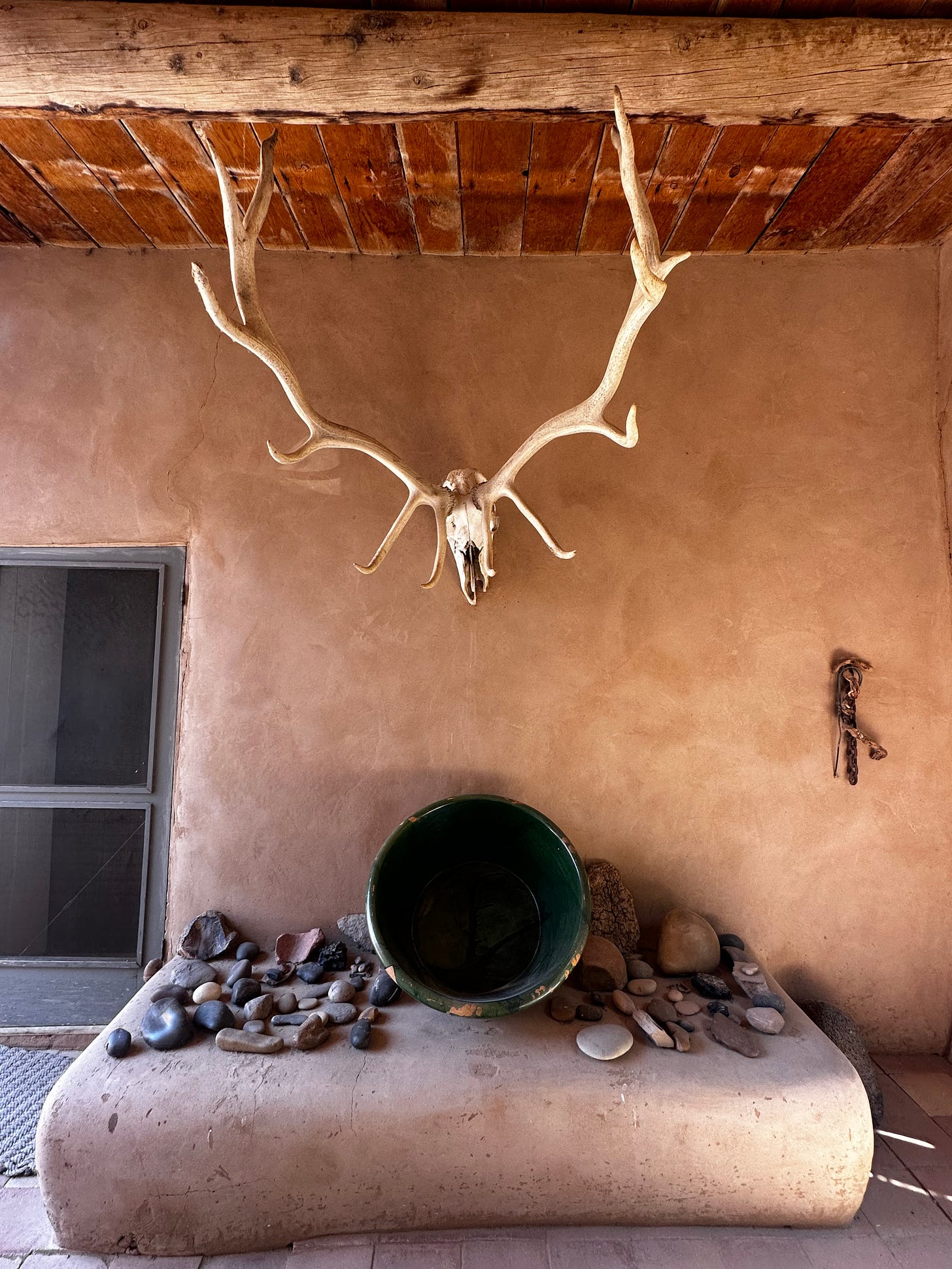

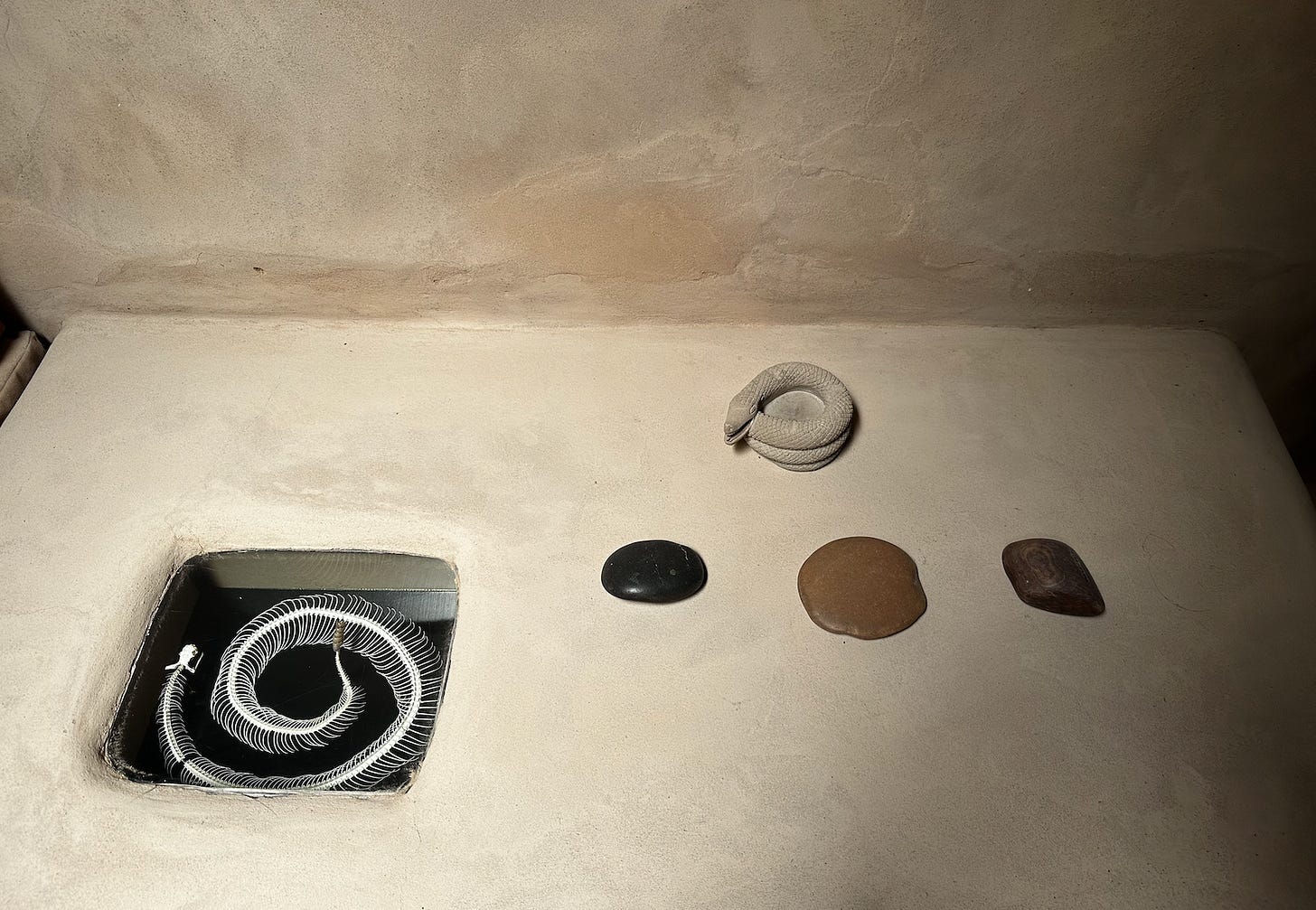
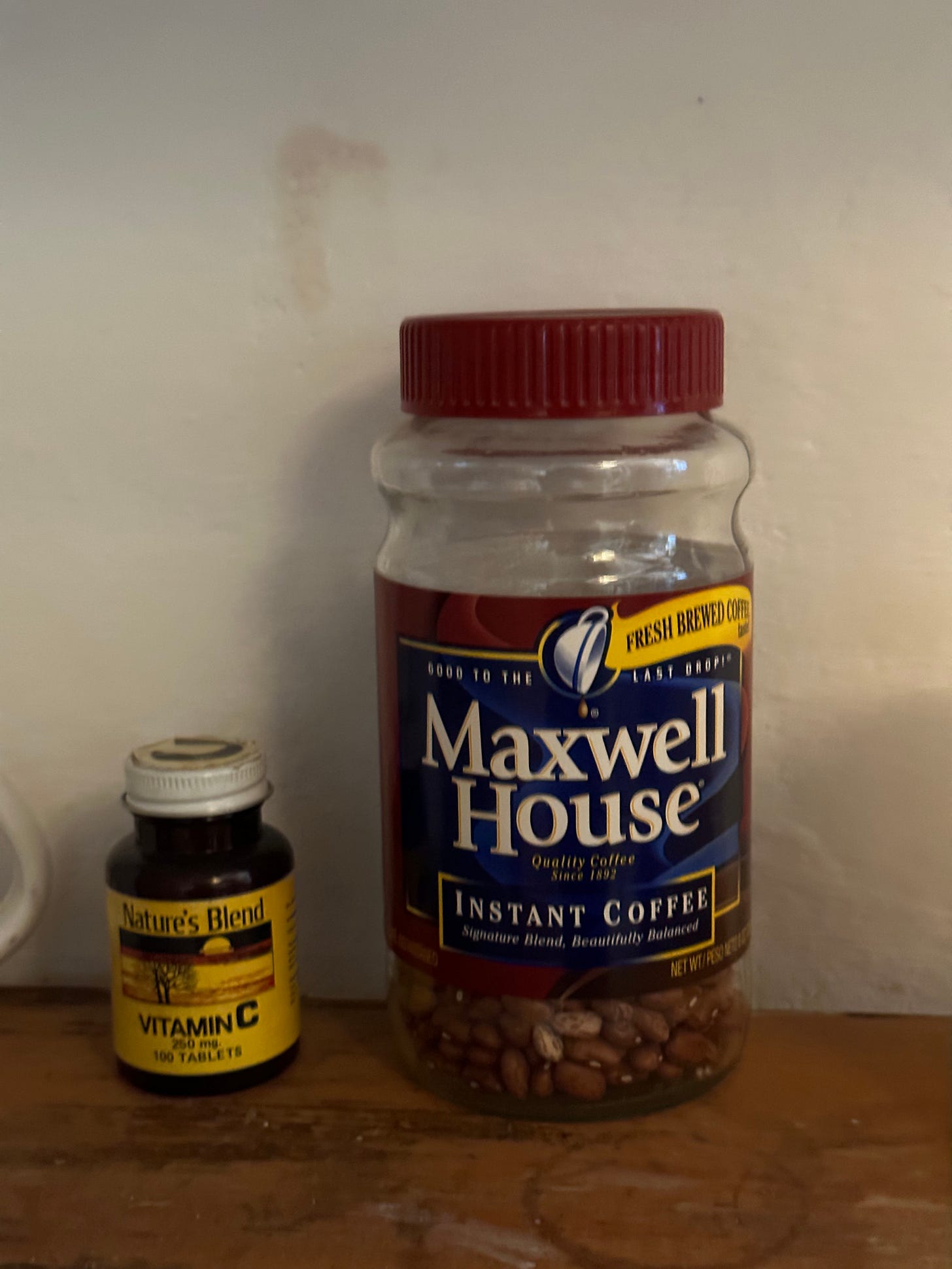
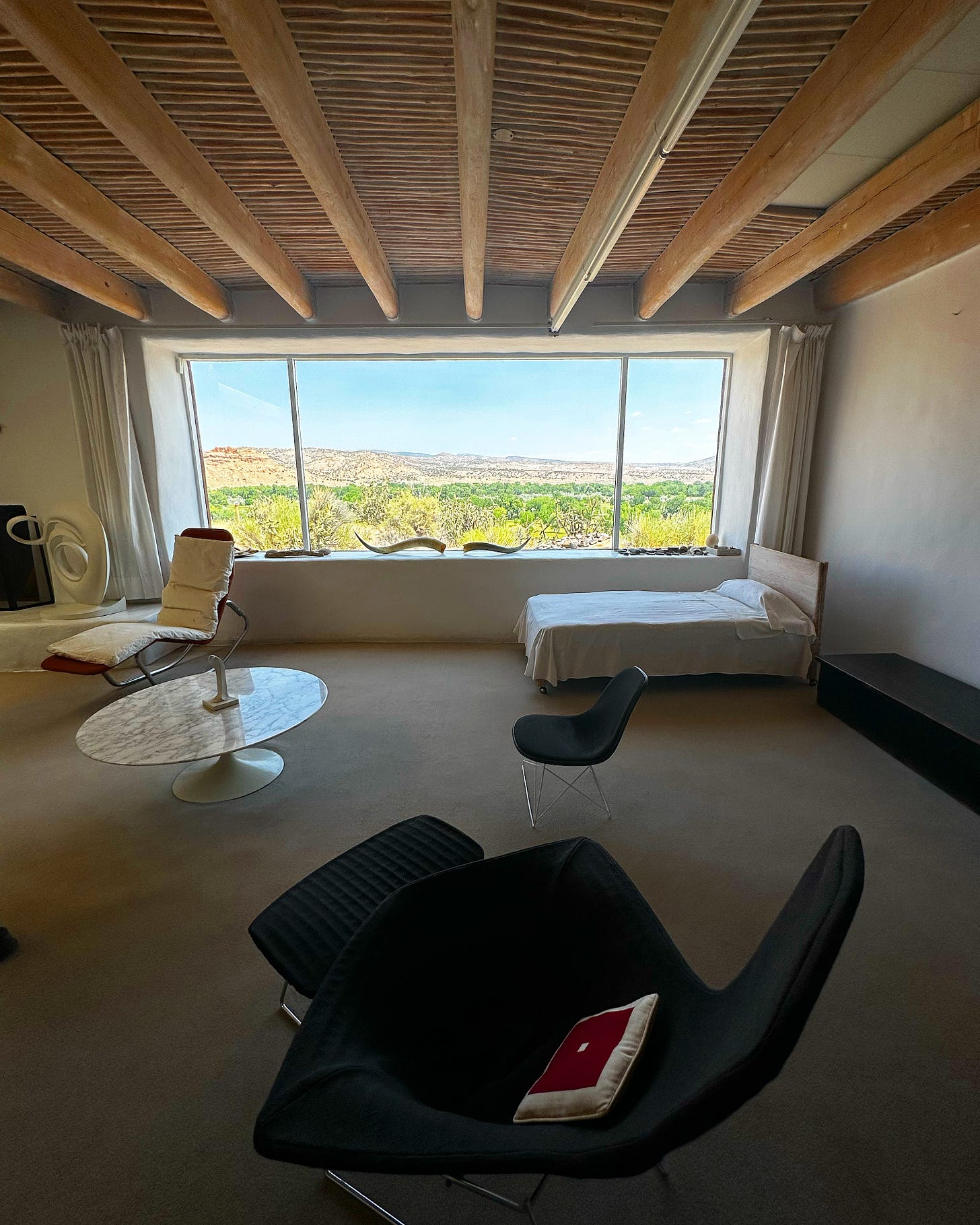
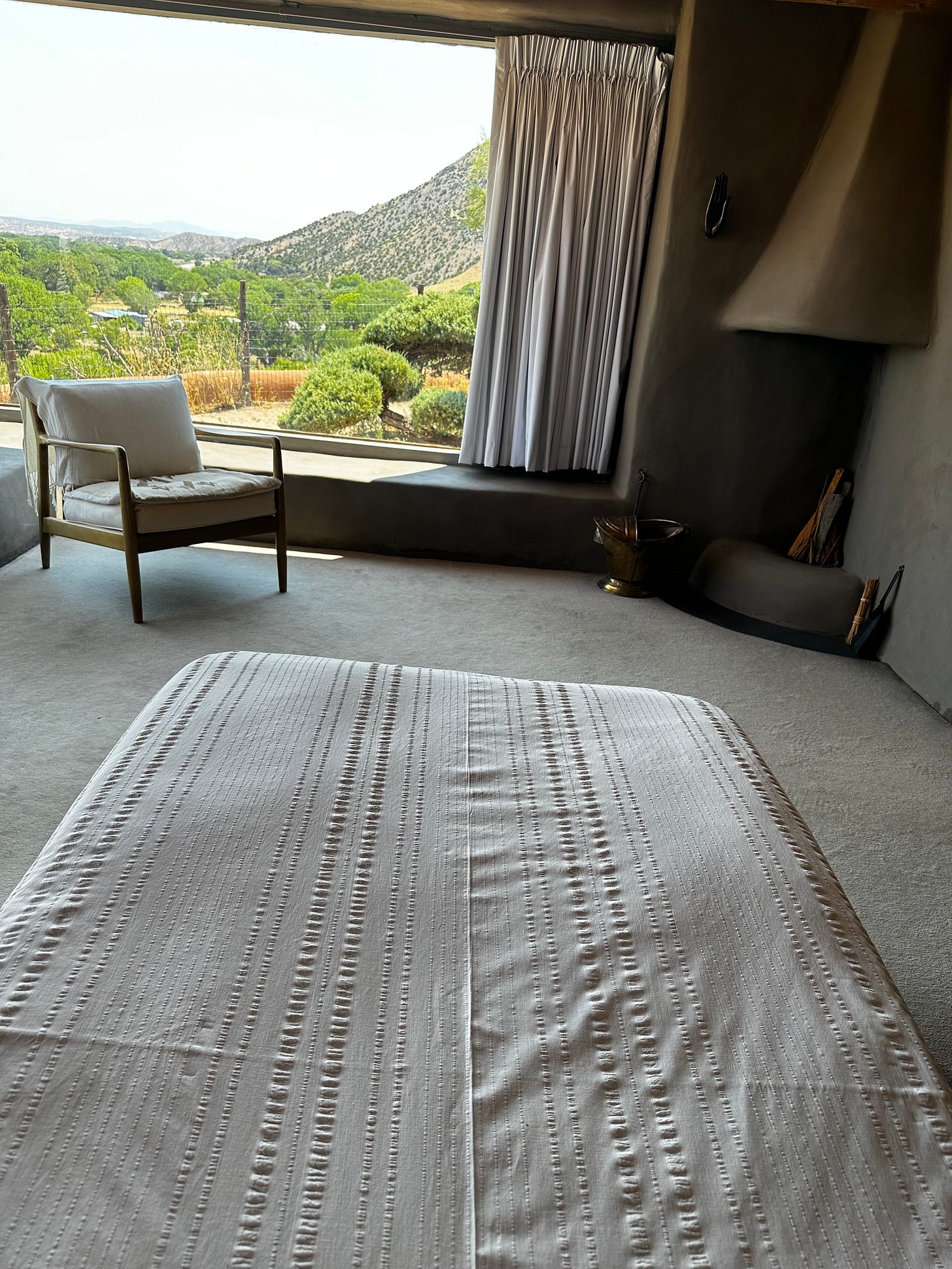

Good stuff, girlfriend. 🌵
IMHO the Georgia O'keefe exhibit in the Art Gallery of NSW in Sydney is to this day my most memorable.